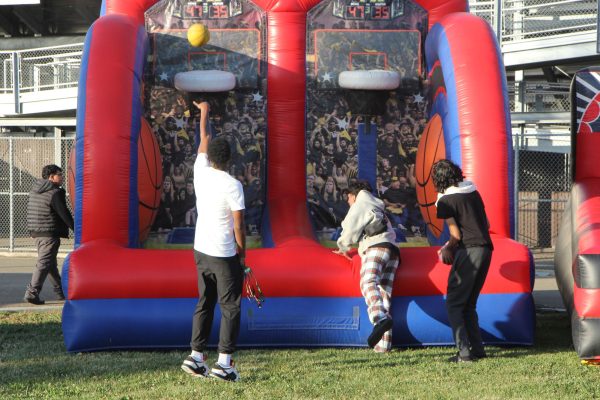Active shooter training helps staff prepare for worst
Will you run, hide or fight?
Teachers and faculty were asked just that at their most recent faculty meeting, Oct. 28.
Because of recent news and local threats of school shootings, teachers and faculty were required to attend an active shooter training in which they were presented a video informing them on the procedures during a campus shooting. They were given three options: run, hide or fight. Run is the best option when there is no immediate danger, and fight is a last resort. Procedures of lockdown and evacuation were reviewed, and teachers and faculty were warned to be mentally prepared for panic, fear and even death.
Marcus Omlin, the district’s emergency service school safety program coordinator, presented here and will continue with other Stockton Unified high schools. He also investigated the recent shooting threat and evaluated it as low-risk.
“We take every threat seriously,” he said. “SUSD has an all-hazard approach; Active-shooter is always a concern.”
He says that the program aims to maintain “best practice” by paying attention to shootings that happen and then considering what could’ve been done differently.
The training video produced solemn faces among the teachers. Afterwards, they were asked to share what they would do in an active-shooter situation. One teacher, however, already knew the experience.
While teaching at a middle school on the East Coast, English teacher Marc Glassberg opened his classroom door only to meet a SWAT member ordering him to close it and stay inside.
“I was clueless at first and I just followed orders,” Glassberg said, remembering how he advised his students to stay quiet.
A harassed substitute teacher invaded the campus with a rifle and held the class he taught hostage in revenge. One boy was shot in the stomach, and the principal, who peeked through the classroom window, was also shot at, the bullet grazing his ear.
The rest of the school was evacuated into the auditorium and later released as the hostage situation continued for hours. Although police saved the hostages, the attacker ended up shooting himself.
Glassberg said the training helped best prepare the staff for any campus emergencies. The most important thing he learned is to remain aware and not to panic.
“Everyday we have emergencies. It’s part of the administration’s responsibility to be able to assess them,” he said. “Unfortunately, that’s a part of our society.”




